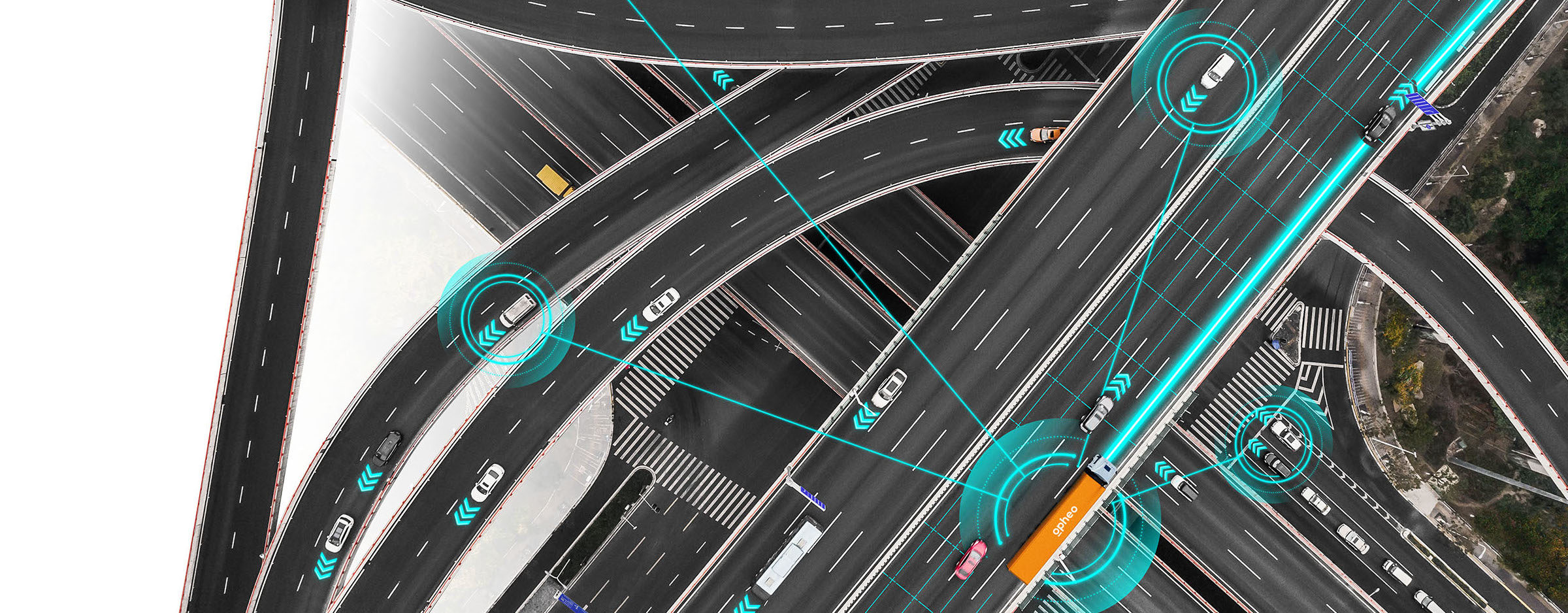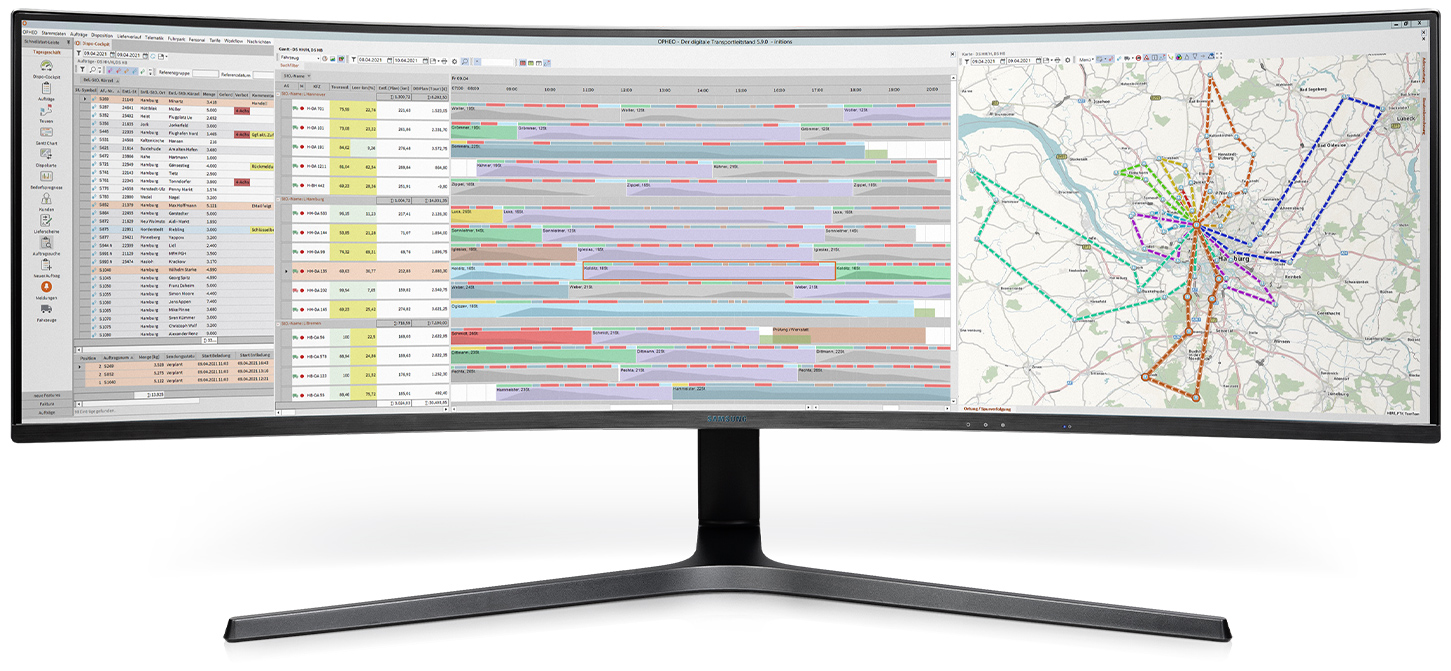
What sounds like dreams of the future is already a reality today with OPHEO: Know what will happen in the next few hours and plan ahead. With predictive planning, OPHEO enables the dispatcher to look precisely into the future. With the help of an award-winning forecasting algorithm, OPHEO shows where bottlenecks and disruptions could occur in the next few hours.
Time shifts due to delays at the ramp or on the road are calculated fully automatically with regard to all consequential effects. This also includes the postponement of necessary breaks and determination of the effects on the remaining driving and working times. Because the dispatcher is more interested in the remaining time that the driver will have for the last planned tour than in the current remaining time.
Of course – practically as a by-product – all ETAs are also automatically recalculated on an ongoing basis. ETA stands for Estimated Time of Arrival, i.e. the estimated time of arrival of a vehicle at the loading or unloading location.
OPHEO calculates this ETA in real time using the OPHEO forecasting algorithm, taking into account the incoming telematics information from the vehicle, the current traffic situation and the driver’s driving time information, which is taken directly from the digital tachograph.
You can plan with an eye to the future.
→ Get to know OPHEO
Quality of ETA data is critical
Predictive planning and the provision of ETA data offer great added value for dispatchers and customers. But only if the quality of the ETA calculation and the forecast plan is right. It is more than annoying if the goods should have been delivered at 3 p.m. according to the shipment tracking and the customer is still waiting at 5 p.m..
Driving times taken into account fully automatically
OPHEO ensures this quality through a forecasting algorithm that also takes into account the driver’s current driving times. These are transferred in real time from the digital tachograph in the vehicle. Only thanks to this fully automatic driving time consideration is an accurate ETA calculation possible. Because it is of course highly relevant for the arrival time at the customer’s whether the driver has to take his next driving time break before the stop or only afterwards.
However, the quality of predictive planning also includes another aspect: the ETA calculation across multiple stops and tours.
ETA calculation over several stops and tours
Many systems limit themselves to calculating ETAs only for the next upcoming stop. For subsequent stops and tours, the system continues to calculate with the now outdated planning data. This approach guarantees bad ETA data.
OPHEO forecasting therefore consistently calculates the effects of every new incoming telematics information for all subsequently planned stops and tours. This means that your customers and your dispatchers always have a valuable information advantage with OPHEO.
Complex dependencies always in view
Furthermore, predictive planning also takes into account dependencies between different tours or resources. For example, in the case of cross-docking, encounter traffic or trailer changes, the delay of the first tour always has a consequential effect on the subsequent tour(s) of the other tractor(s).
Benefit now from a superior dispatch.
→ Get to know OPHEO
Predictive Planning
Now you can know what will happen in 5 hours
With our award-winning OPHEO forecasting algorithm, your dispatchers can look into the future and see at a glance where bottlenecks and disruptions could occur in the next few hours. Based on the data transmitted by the telematics devices, OPHEO permanently calculates a new forecast in real time and updates the display in the dispatch cockpit fully automatically.
Not only the estimated arrival times are calculated, but also the shifts in driving and rest times. For this purpose, OPHEO takes the current driving time data from the truck’s digital speedometer and carries out its own driving time forecasting.
In a concrete case, this means that OPHEO can inform the dispatcher as early as 10 a.m. that a customer appointment will not be met in five hours or that a driver will not be able to manage with his driving time in the afternoon. This gives them a valuable window of time to change the route plan or inform customers in good time.
Wouldn’t you also like to be able to take a look into the future? Then arrange your personal demo today and discover intelligent truck route planning with OPHEO and Predictive Planning!

